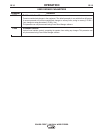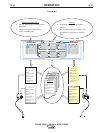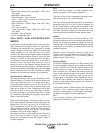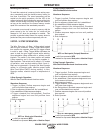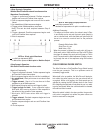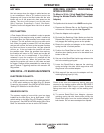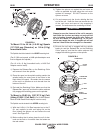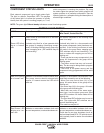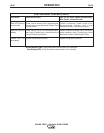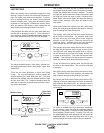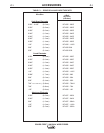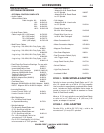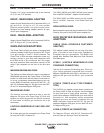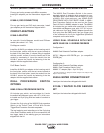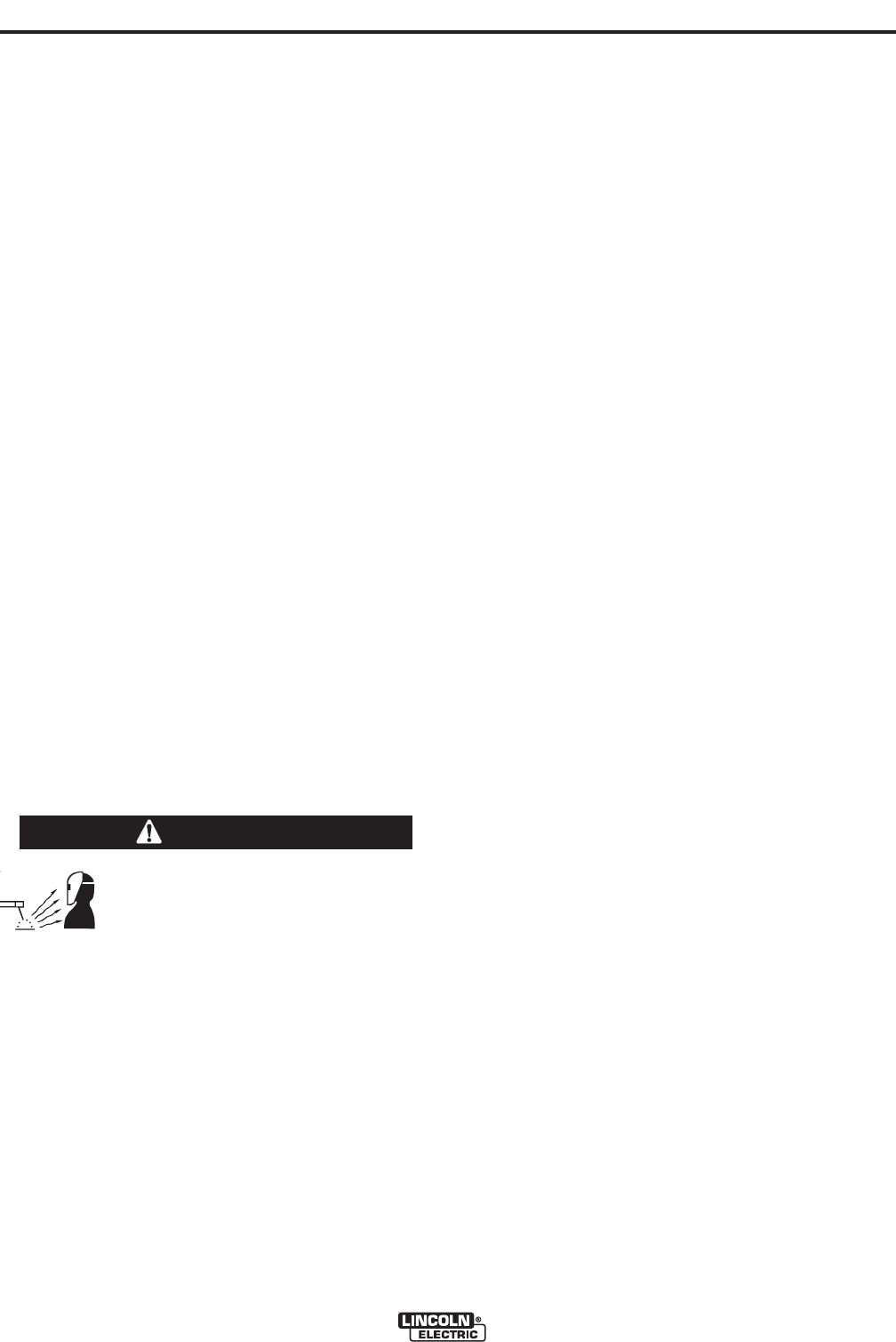
%&(*%$
#!$-"
1) Use only a network compatible power source.
2) Properly connect the electrode and work leads for
the correct electrode polarity.
3) Set all desired parameters such as trigger logic,
Run-in Speed, Acceleration, Electrode polarity, etc.
per “DIP SWITCH SETUP” in the INSTALLATION
section.
4)
Set 2-step, 4-step switch on wire drive to desired
mode of operation. (Refer to “2-step/4-step switch
operation” in this section.)
5) Select Weld Mode. (Refer to Control Box
Operation in this section).
6) Use Control Select switches, increment/decrement
switches, and encoder knobs to set desired para-
meters for weld depending on what options are
installed. (Refer to Control Box Operation in this
section).
7) Feed the electrode through the gun and cable and
then cut the electrode within approximately .38"
(9.5 mm) of the end of the contact tip for solid wire
and within approximately .75" (19mm) of the exten-
sion guide for cored wire.
8) Connect work cable to metal to be welded. Work
cable must make good electrical contact to the
work. The work must also be grounded as stated
in "Arc Welding Safety Precautions".
9) If used, be sure shielding gas valve is turned on.
10) Position electrode over joint. End of electrode
may be lightly touching the work.
11) Lower welding helmet, close gun trigger, and start
welding. Hold the gun so the contact tip to work
distance gives the correct electrical stickout as
required for the procedure being used.
12) To stop welding, release the gun trigger and then
pull the gun away from the work after the arc goes
out and Postflow time, if used, is over.
13) If required, starting can be optimized by adjusting
the acceleration and/or run-in speed. (Refer to
Control Box Operation in this section).
-(("$$
At the end of a coil, remove the last of the old elec-
trode coil from the conductor cable by either pulling it
out at the nozzle end of the gun or by using the follow-
ing procedure:
1) Cut the end of the electrode off at the gun end. Do
not break it off by hand because this puts a slight
bend in the wire making it difficult to pull it back
through the nozzle.
2) Disconnect the gun cable from the gun connector
on the Power Feed 10 Dual wire drive unit and lay
the gun and cable out straight.
3) Using pliers to grip the wire, pull it out of the cable
from the connector end.
4) After the electrode has been removed, reconnect
the gun cable to the drive. Load a new reel of elec-
trode per the instructions in “Wire Reel Loading” in
this section.
-(%,("%&(%**%$
The wire drive provides overload protection of the wire
drive motor. If the wire drive motor becomes over-
loaded for an extended period of time the wire drive
will issue a shutdown command to the Control Box
and force it’s status light to blink between green and
red. The Control Box turns off the power source, wire
feed and gas solenoid. The status light on the wire
drive will continue to blink between green and red for
about 30 seconds before the wire drive will automati-
cally reset. At that time, the wire drive will issue a
shutdown over command to the Control Box that will
return the system to normal operation. The wire drive
will force it’s status light to solid green.
Overloads can result from improper tip size, liner,
drive rolls, or guide tubes, obstructions or bends in the
gun cable, feeding wire that is larger than the rated
capacity of the feeder or any other factors that would
impede normal wire feeding. (See “Avoiding Wire
Feeding Problems” in the MAINTENANCE section).
&%-(R#+"-((
-;8AHF<A:4A%C8AE6
CEB68FF<G<FA868FF4ELGBHF8
6BEE86G8L8;8474A75B7LCEB
G86G<BA
____________________________________
-($$



